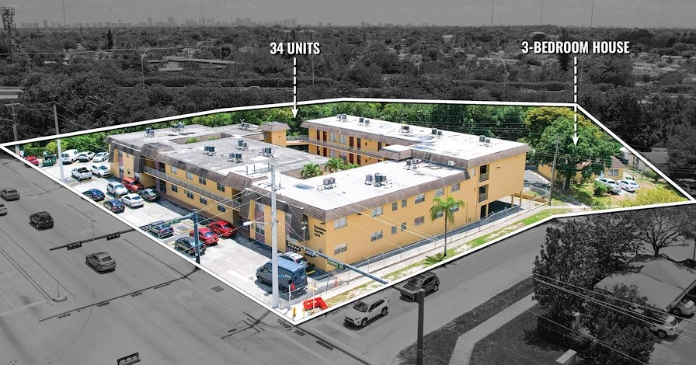Interest rates went up across the board at the end of April, likely reflecting a combination of four factors:
- a strengthening economy;
- a growing deficit caused by geometric growth in government spending, which, in some circles, has called into question the creditworthiness of the U.S.;
- concerns about the upcoming supply of U.S. notes and bonds;
- and forecasts of higher inflation.
Most feel that the last point (higher inflation) has made the least significant contribution to the current rise in interest rates due to the wide output gap, a moribund residential real estate market, wage deflation and the effects of globalization, to name just a few of the reasons.
The current artificially low readings on inflation and its salutary impact on real incomes might create the false illusion that the U.S. consumer appears poised to contribute to a self-sustaining domestic economy. Indeed, the recent strength in first-quarter 2010 retail sales is now being comfortably extrapolated by many managements, strategists and analysts.
From my perch, however, there remains little question that the current inflation readings underestimate the true rate of inflation. As such, the misery index and real incomes are under more pressure than is apparent and represent a challenge to consensus growth expectations.
The durability of the consumer’s strength remains to be seen, but I would not necessarily extrapolate the recent consumer strength into the balance of the year. While the future course of personal consumption trends will be primarily dictated by the degree to which jobs are created in the months ahead (and secondarily by the slope of the housing recovery), one could argue that the improvement in spending over the past three months is a temporary catch-up to the hiatus in discretionary sales over the prior 12 months.
If correct, once caught up, the consumer might be increasingly vulnerable, especially in light of the higher tax rates and the costs associated with sweeping regulatory reforms that will adversely impact both consumer and small business behavior as we move toward year-end.
“Have you ever wondered why the CPI (Consumer Price Index), GDP (Gross Domestic Product) and employment numbers run counter to your personal and business experience? The problem lies in biased and often manipulated government reporting,” says John Williams of Shadow Government Statistics.
Williams might be hyperbolic, but I continue to believe that, by including Owners’ Equivalent Rent, (OER) as well as other substitution and hedonic adjustments, reported inflation understates the real rate of inflation and the pressure on the middle-class consumer and small business, which remain an important engine to domestic economic growth and job creation.
The CPI is a statistically tortured number, and this helps to explain why the misery index of the average American consumer may be worse than meets the eye.
As an aside, a critical eye would question the myopic focus on the U.S. CPI within the context of a global economy. Global inflation rates matter over here (and so does the policy reaction to those rates over there). China and India’s inflation rates are heating up—there is no OER in their calculations of inflation—and China’s policy actions to deal with this are especially important to us. In fact, one could argue that, at times, the Chinese inflation rate could be more important for the U.S. than the U.S. inflation rate.
Here is how owners’ equivalent rent is calculated.
Owners’ Equivalent Rent is the amount of rent that could be paid to substitute a currently owned home for an equivalent rental property. OER is a dollar amount that is published by the Bureau of Labor Statistics to measure the change in implicit rent, which is the amount a homeowner would pay to rent or would earn from renting his or her home in a competitive market. The rental equivalence figure is obtained by directly asking sampled homeowners the following question: If someone were to rent your home today, how much do you think it would rent for monthly, unfurnished and without utilities? OER is one of the two main components of the CPI, which measures the average change over time in the prices paid by consumers for a market basket of goods and services.
The idiocy of the calculation is best seen when, during the biggest speculative housing bubble of all time in the early to mid 2000s, the OER calculation barely moved up. It might even be more idiotic that policy is based on such a questionable CPI statistic.
“Core CPI less OER (owners’ equivalent rent) and RPR (Rents of Primary Residence) is running near the highs that we’ve seen in the last 12 years. As a matter of fact, December’s number of 2.47 percent was just a couple of tenths off of a 12-year high in this measure,” states Jim Bianco.
Since well over 90 percent of homeowners—67 percent of American families own homes—have fixed shelter costs and don’t often move from their residence, the owners’ equivalent rent calculation, which embodies nearly 25 percent of the CPI, artificially influences the CPI. Its methodology seems faulty as does its high weighting on the construction of the consumer price indices. It would be preferable to see the introduction of a more accurate cost of shelter component to the CPI that incorporates existing- and new-home price inflation, the cost of renting, debt service costs (including mortgage loan rates and balances), as well as a statistic that somehow measures and incorporates the percentage of homeowners and renters that take on a new residence.
As some of the critics (Williams, Bianco, Ritholtz et al.) write, backing out the depressive effect of OER from the current statistically massaged CPI series leads to an inflation reading above what is reported by the government.
Bill King wrote extensively about the subject in The King Report two months ago; it “bears” repeating:
“The squeeze on American living standards was clearly highlighted last week by CPI data. Though most people brayed that inflation is benign, the headline number belied the rising costs of necessities with the decline in real income. For 2009, real weekly wages declined 1.6 percent, the biggest decline since 1990 (-2.5 percent). (Real average hourly earnings dropped 1.3 percent year-over-year, and average weekly hours worked declined 0.3 percent) Core inflation increased 1.8 percent. But owners’ equivalent rent is about 40 percent of core CPI and 24.433 percent of CPI.
The Washington Post: “Energy costs for the 12 months ending in December shot up 18.2 percent. That was the biggest jump since 1979… The energy surge was led by higher gasoline costs, which rose 53.5 percent after falling 43.1 percent in 2008—The 1.6 percent drop in average weekly earnings for non-supervisory workers was the worst annual performance since a 2.5 percent decline in 1990. Weekly earnings have fallen in five of the past seven years, underscoring the pressures American households were facing even before the recession began.”
For years we have moaned that CPI is distorted, on purpose, by hedonic adjustments and OER. We noted that OER changes do not impact the vast majority of Americans because 67 percent own homes and do not rent. Also, people in public housing, rent-controlled units and subsidized housing are not impacted. Excluding OER, consumer prices increased 3.5 percent in 2009. However, due to Bennie’s easy money, this inflation is accelerating. Non-OER inflation is up at a 4 percent annualized over the past six months and 4.5 percent over the past three months.
By the way, few economists or pundits have noticed that the BLS has increased the weighting of OER to 24.433 percent of CPI. It had been 23.158 percent. (Because it’s now declining?) And let’s not ignore the fact that Americans’ misery index, in reality, is far worse than the above official numbers indicate due to fraudulent U.S. economic statistical methodology. U.S. solons have relentlessly altered CPI, jobs data and GDP statistical methodology to obfuscate declining U.S. living standards.
John Williams notes, “On the inflation front, the CPI-U annual inflation rate jumped to 2.7 percent (3.4 percent for the CPI-W)—Adjusted to pre-Clinton (1990) methodology, annual CPI growth rose to 6.1 percent in December versus 5.1 percent in November, while the SGS-Alternate Consumer Inflation Measure, which reverses gimmicked changes to official CPI reporting methodologies back to 1980, rose to about 9.7 percent (9.68 percent for those using the extra digit) in December versus 8.8 percent in November.”
Plug in the pre-Clinton or the SGS-Alternate Consumer Inflation Measure, as well as a more reasonable nominal income metric, U.S. solons greatly overstate jobs and income, and the American misery index would be more in line with the palpable ire in the U.S.A.
In summary, it remains my view that the CPI calculation is rotten to the core. It understates the consumers’ misery index and could undermine the self-sustaining recovery thesis. Despite evidence of improving retail sales since year-end, the consumer remains the weakest link to the economy and is potentially an albatross that could derail a smooth and durable domestic growth trajectory. While optimism resounds on the floor of the New York Stock Exchange and in the components of the retail HOLDRs (a type of security created by Merrill Lynch and traded on the American Stock Exchange which bundles together a portfolio of stocks in a given sector, enabling investors to buy and sell the entire collection of stocks in a single transaction), a further recovery in consumption is likely to be derailed unless job growth rebounds significantly as the misery index will weigh on sentiment and, in the fullness of time, on consumption trends.
Author: Doug Kass, TheStreet.com















